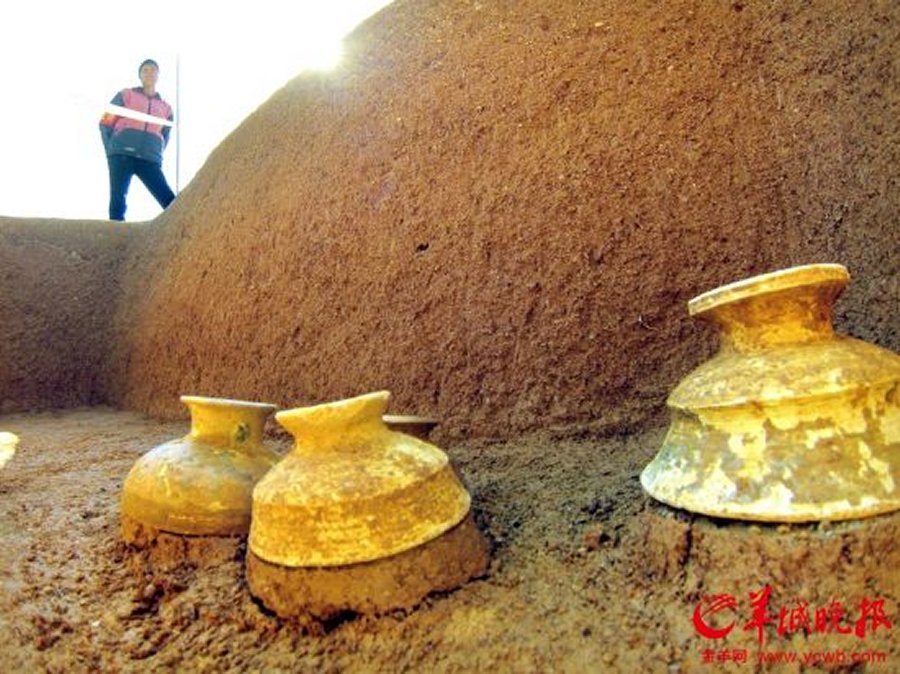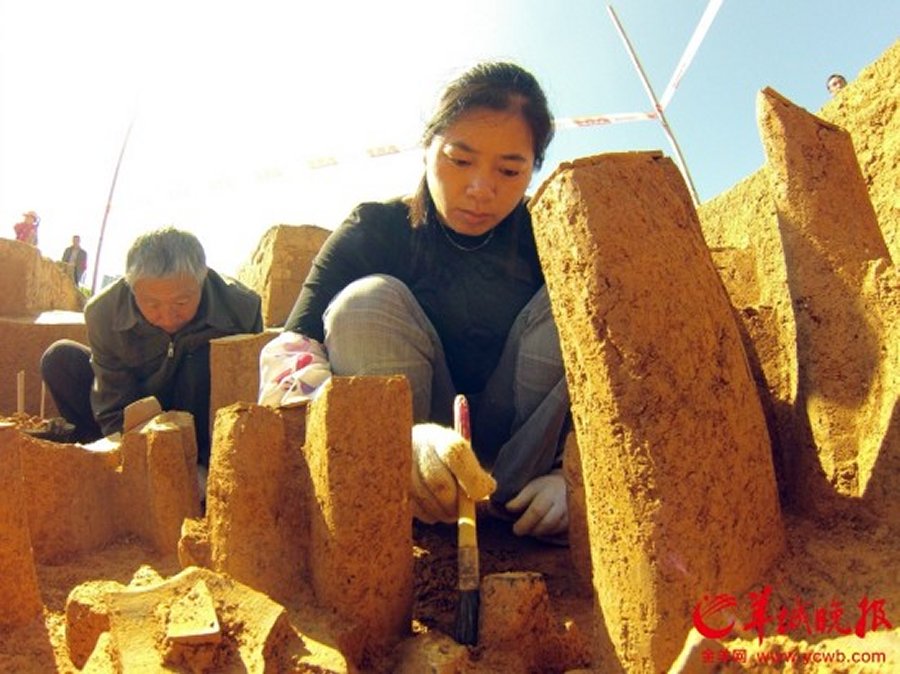MessageToEagle.com – Archeologists in south China’s Guangdong Province have found over 50 ancient tombs in a suburb of the provincial capital of Guangzhou, authorities said Thursday.
The complex, discovered three months ago, is believed to have been built during the Spring and Autumn Period (770 BC – 476 BC), according to Guangzhou institute of cultural relics and archaeology.

The complex covers about 2,000 square meters, and all tombs are rectangular, from 2.1 to 2.8 meters long and 1.2 to 1.4 meters wide.
Zhang Qianglu, official with the institute, said, archaeologists have found plenty of ceramics and porcelain, alongside some bronze axes and arrowheads.
The relics found there show that the tombs’ occupants should all be civilians, probably belonging to the same clan, he added.

Zhang said the well-preserved tombs are of great value to the study of ancient culture and customs in China’s Pearl River Delta.
Only a few months ago, China Daily informed about the five major archeological discoveries in Guangzhou in 2014:
- three wooden boats that date back to the middle of the Qing Dynasty (1644-1911);
- the best preserved remains of city walls built during the Song Dynasty in Guangzhou;
- 220 relics dating from the Han Dynasty (206 BC – 220 AD) and 1,800 years before the Qin Dynasty (221-206 BC) that were discovered in the upper reaches of the Liuxi River;
- ancient tombs discovered on Hengfu Road that were mainly built during the Han Dynasty and the Tang Dynasty (618-907)
- and the riverbank structures built during the Southern Han Dynasty (917-971) and the Song Dynasty along today’s YuexiuZhong Lu (Road).’
MessageToEagle.com






